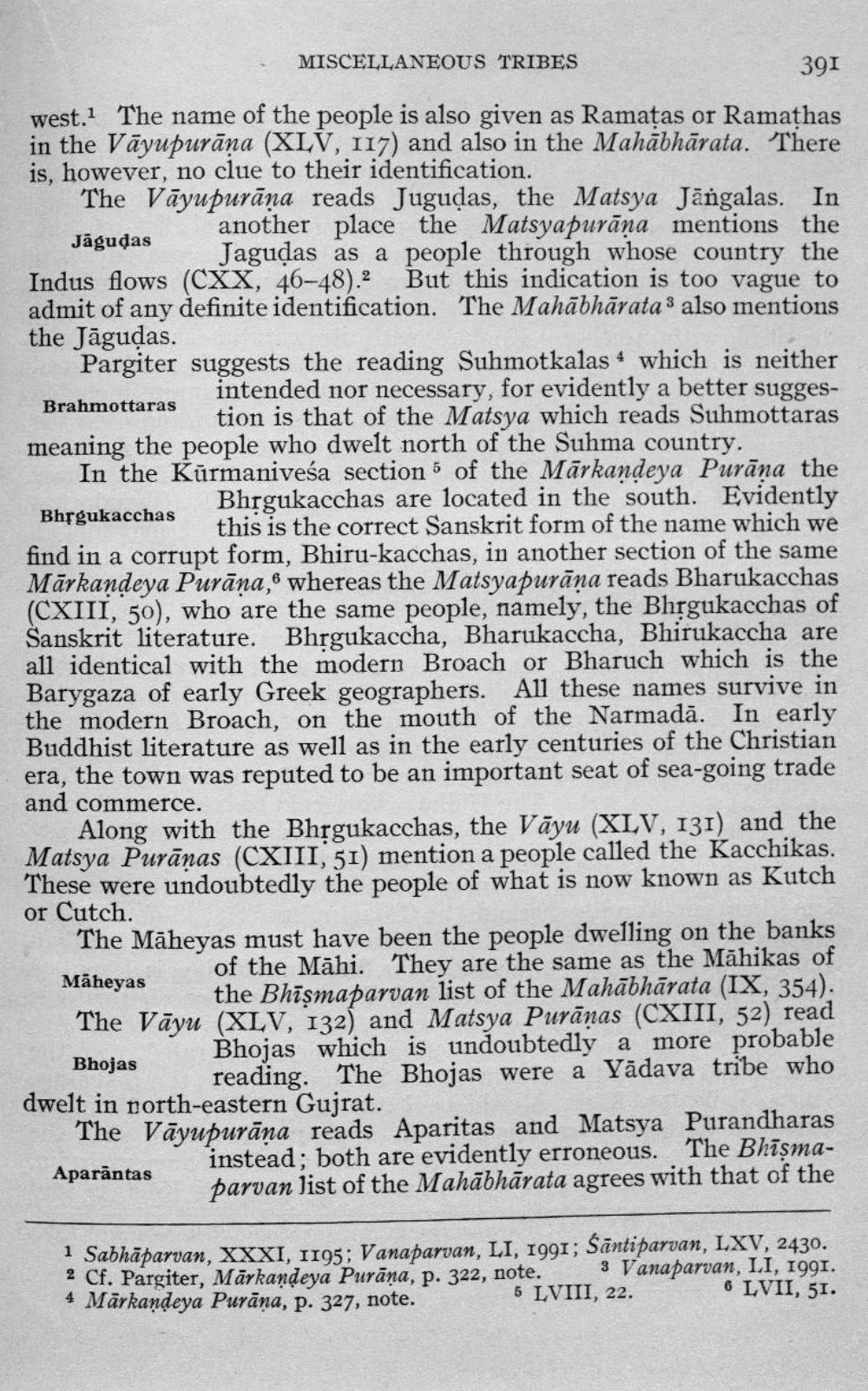________________
MISCELLANEOUS TRIBES
391
west.1 The name of the people is also given as Ramatas or Ramathas in the Vāyupurāna (XLV, 117) and also in the Mahābhārata. There is, however, no clue to their identification. The Vāyupurāna reads Jugudas, the Matsya Jāngalas. In
another place the Matsyapurāna mentions the Jāgudas
ugas Jagudas as a people through whose country the Indus flows (CXX, 46-48).2 But this indication is too vague to admit of any definite identification. The Mahābhārata : also mentions the Jāguļas. Pargiter suggests the reading Suhmotkalas 4 which is neither
intended nor necessary, for evidently a better suggesBrahmottaras
u tion is that of the Matsya which reads Suhmottaras meaning the people who dwelt north of the Suhma country. In the Kūrmaniveśa section 5 of the Mārkandeya Purāna the
w Bhrgukacchas are located in the south. Evidently Bhşgukacchas
this is the correct Sanskrit form of the name which we find in a corrupt form, Bhiru-kacchas, in another section of the same Mārkandeya Purāna, whereas the Matsyapurāna reads Bharukacchas (CXIII, 50), who are the same people, namely, the Bhrgukacchas of Sanskrit literature. Bhrgukaccha, Bharukaccha, Bhirukaccha are all identical with the modern Broach or Bharuch which is the Barygaza of early Greek geographers. All these names survive in the modern Broach, on the mouth of the Narmadā. In early Buddhist literature as well as in the early centuries of the Christian era, the town was reputed to be an important seat of sea-going trade and commerce.
Along with the Bhrgukacchas, the Vāyu (XLV, 131) and the Matsya Purānas (CXIII, 51) mention a people called the Kacchikas. These were undoubtedly the people of what is now known as Kutch or Cutch. The Māheyas must have been the people dwelling on the banks
of the Māhi. They are the same as the Māhikas of Maheyas
the Bhīsmaparvan list of the Mahābhārata (IX, 354). The Vāyu (XLV, 132) and Matsya Purānas (CXIII, 52) read
Bhojas which is undoubtedly a more probable Bhojas
reading. The Bhojas were a Yādava tribe who dwelt in north-eastern Gujrat.
The Vāyupurāna reads Aparitas and Matsya Purandharas Aparäntas instead; both are evidently erroneous. The Bhīsma
parvan list of the Mahābhārata agrees with that of the
1 Sabhāparvan, XXXI, 1195; Vanaparvan, LI, 1991; Sāntiparvan, LXV, 2430. 2 Cf. Pargiter, Mārkandeya Purāna, p. 322, note. 3 Vanaparvan, LI, 1991. 4 Mārkandeya Purāna, p. 327, note.
5 LVIII, 22.
6 LVII, 51.




